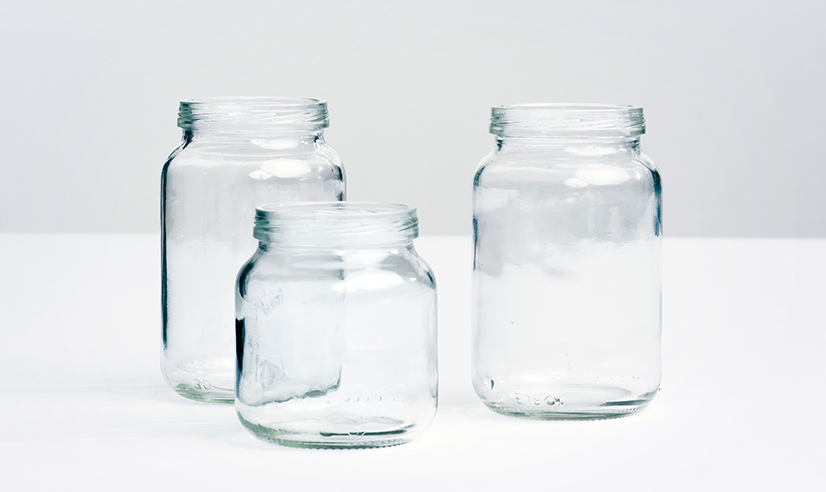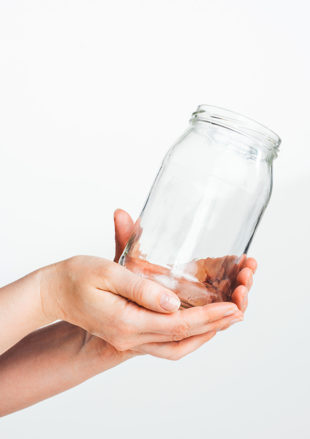Sorting glass packaging is a climate action

Recycling is proven to make a difference: each kilogramme of sorted, non-deposit glass packaging saves about 0.5 kg of greenhouse gas emissions according to the report commissioned by Rinki and carried out by LCA Consulting Oy.
The recycling rate of non-deposit glass packaging waste has increased year on year.
According to Rinki’s CEO Juha-Heikki Tanskanen, this is explained partly by the fact that producers are now responsible for recycling packaging waste and partly by long-standing traditions. People also talk about recycling more than they used to.
“Producers became responsible for organising recycling operations for glass packaging waste in 2015. We have been able to send all sorted glass packaging waste through cleaning to recycling, and this has reduced the use of glass in earthworks, which is not considered recycling. At the same time, people sort glass and other materials more readily. This is certainly helped by the improved facilities for recycling and the regular news reports about plastic loads in the oceans and climate change. Recycling is an easy and tangible way to make a difference to your carbon footprint,” says Tanskanen.
Recycling is an easy and tangible way to make a difference to your carbon footprint.
Rinki already recycles 97% of its customer companies’ non-deposit glass packaging. Tanskanen points out that in addition to recycling glass, Finland is one of the leading countries in terms of recycling metal, carton and paper.
“This may also be due to the growing awareness of mixed waste ending up in incineration plants. Sorting glass, in particular, is relatively easy, as people do not see glass as a disposable material and may feel it is wrong to send it for combustion.”
Energy savings and reduced emissions
Every Finn sorted an average of 4 kg of non-deposit glass packaging last year, and Finns recycled a total of 22 million kilogrammes of glass packaging.
Sorting and recycling glass packaging reduced greenhouse gas emissions by 11,500,000 kg. Equivalent emissions are generated if a diesel car is driven around the globe 2,052 times.
“Using recycled glass as a raw material for new packaging significantly saves energy and reduces emissions. The reductions in emissions achieved this way are significantly higher than the emissions from the transport of recycled glass,” says Juha-Heikki Tanskanen.
Reductions in emissions achieved are significantly higher than the emissions from the transport of recycled glass.
The best sorters of glass are found in the Salo, Savonlinna and Rovaniemi regions, while there is still a lot to be done in Central Finland. Tanskanen says that the differences can mainly be explained by the fact that the nation-wide packaging waste sorting guidelines have only been in place for a few years.
“Sorting guidelines used to vary depending on the municipality and waste company. Many people may still remember the old instructions that ceramics and broken drinking glasses could be recycled with glass.”
Quality matters
Glass is a brilliant material as glass packaging can be melted and recycled again and again. Recycled glass can be turned into a variety of products. About 82% becomes new glass packaging and about 18% is turned into products such as glass wool, flat glass and building blocks.
Yet the process of recycling glass is not entirely without its problems. The biggest challenges come from incorrect sorting: glass waste contains an average of 7% of materials other than glass packaging. Medical glass and heat-resistant glass, for example, should not be put into glass packaging collection containers as they impede recycling.
Glass waste also always contains a small amount of other waste and materials that are sorted incorrectly, such as plastic, porcelain or metal. These, too, are primarily recycled as raw material for new products and, whenever possible, used in energy production.
Since recycled glass is used for brandy bottles, for example, it must be of the best possible quality.
“Glass is always taken to a glass cleaning plant, but the fewer impurities the material contains, the better the quality of the cullet. That’s why it is important to follow sorting instructions,” Tanskanen explains.
Glass travels to the UK and the Netherlands
New glass packaging is not manufactured in Finland, so the glass recycled by Finns is used as a raw material for new bottles and jars in the UK and the Netherlands. Glass packaging waste taken to collection points is transferred from Rinki’s local terminals, which are located across Finland, to Tolkkinen Port in Porvoo.
A ship carries glass to the UK and the Netherlands 7-8 times a year. Each batch of glass is inspected at the port of departure for impurities.
Even if there were glass packaging manufacturers in Finland, the emissions from glass recycling would only be 12% lower than now. So, despite the transport, recycling is a great way to save the environment.
Despite the transport, recycling is a great way to save the environment.
“The biggest emission savings come from using recycled glass as raw material. It is a pity, though, that glass packaging is not made in Finland,” says Tanskanen.
Value for money
The recycling of deposit glass bottles is a success story, and many people know this. Juha-Heikki Tanskanen says that it is remarkable that non-deposit glass packaging is recycled almost as eagerly as deposit glass bottles.
“When a company with producer responsibility pays recycling fees, it gets good value for its money: we recycle almost as much glass as companies use,” he says.
Recycling is also facilitated by the fact that glass can be recycled virtually forever.
“Circular economy operates in an almost closed loop, while almost 100% of glass is recycled,” says Tanskanen.
